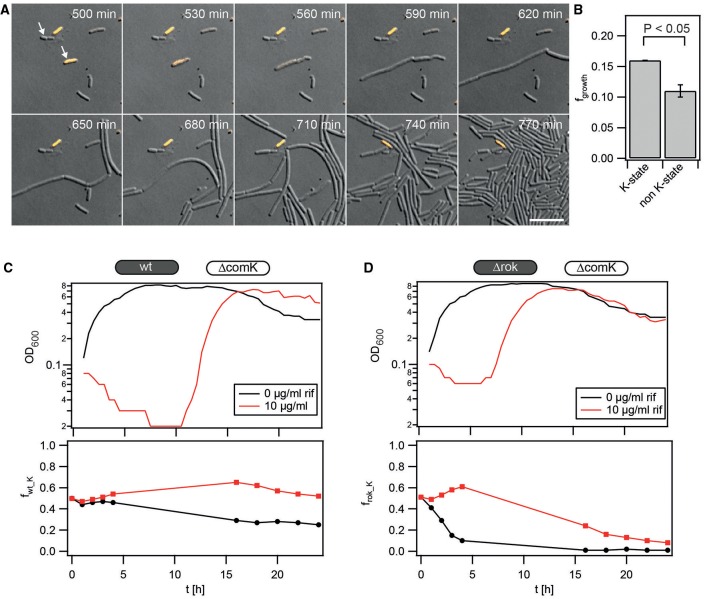Figure 6.
Competence is beneficial during transient exposure to rifampicin. (A) Typical time lapse series of PcomKgfp (BD2711) outgrowth after rifampicin exposure. Bacteria were grown to T2, diluted and subsequently inoculated into a microscopy flow chamber. Fresh competence medium containing 10 μg/ml rifampicin was flushed through the flow chamber for 1 h. Afterwards, fresh competence medium without antibiotics was continuously applied, and cells were imaged. DIC and fluorescence images were merged; orange, GFP fluorescence. Arrows depict cells that eventually initiate growth. Scale bars: 10 μm. (B) Fractions of competent and non-competent cells that re-initiated growth (N = 3409 cells, error bars: standard deviation from three independent experiments). (C,D) Competition experiment between (C) wt (BD630) and ΔcomK gfp (Bs140) and (D) Δrok (Bs056) and ΔcomK gfp. Competitors were grown separately to T2, diluted into fresh competence medium containing rifampicin as detailed in the graphs, and mixed in a 1:1 ratio. At t = 1 h, antibiotics were washed out and fresh competence medium was added. Upper graphs: growth curves (optical density). Lower graphs: fraction of (C) wt and (D) Δrok cells competing against non-competent ΔcomK gfp cells. Each graph is a representative result of at least three independent experiments.

